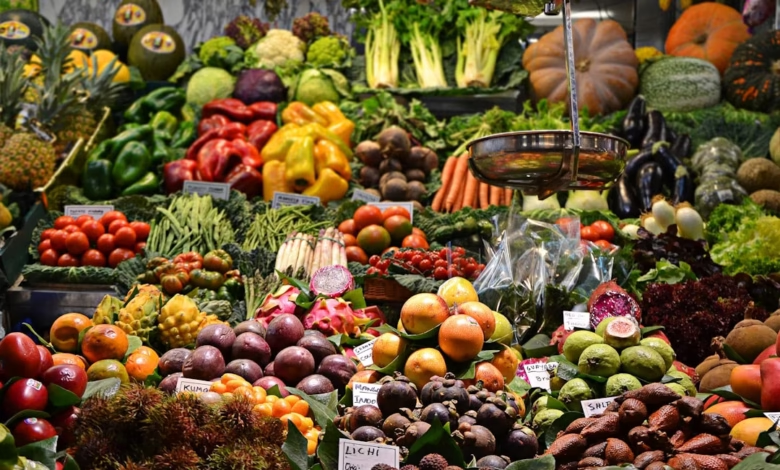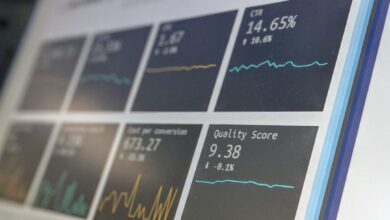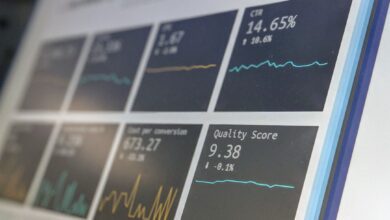Mastering Commodities Trading: Essential Strategies, Risk Management, and Market Dynamics for Success in 2024

Commodities trading has emerged as a vital component of global financial markets, allowing investors to trade essential raw materials such as gold, silver, oil, and agricultural products. As the demand for these commodities fluctuates due to various factors like geopolitical tensions, weather patterns, and economic shifts, understanding the intricacies of commodities trading becomes crucial. This article delves into the fundamental concepts and market dynamics that underpin this trading sector, providing insights into essential trading strategies such as futures trading and options trading. Furthermore, we will explore effective risk management techniques necessary for success in commodities trading, alongside the psychological aspects that influence traders' decisions. Whether you are a seasoned investor or a newcomer to online trading platforms, this comprehensive guide will equip you with the knowledge to navigate the complexities of commodities trading and enhance your market analysis skills. Join us as we unravel the opportunities and challenges that await in this dynamic field.
- 1. Understanding Commodities Trading: Key Concepts and Market Dynamics
- 2. Essential Trading Strategies for Commodities: From Futures to Options Trading
- 3. Risk Management in Commodities Trading: Techniques for Success and Trading Psychology
1. Understanding Commodities Trading: Key Concepts and Market Dynamics
Commodities trading involves the buying and selling of raw materials, such as gold, silver, oil, and agricultural products. Understanding the key concepts and market dynamics of commodities trading is crucial for both novice and experienced traders.
At its core, commodities trading can be categorized into several forms, including futures trading, options trading, and spot trading. Futures trading allows traders to agree on a price for a commodity to be delivered at a future date, which is vital for managing risks associated with price fluctuations. Options trading, on the other hand, grants traders the right, but not the obligation, to buy or sell a commodity at a predetermined price before a specific date. This flexibility can be a powerful tool in risk management.
Market dynamics play a significant role in commodities trading. Factors such as supply and demand, geopolitical events, and economic indicators can greatly influence prices. For instance, a drought can reduce agricultural output, driving up prices for commodities like wheat and corn. Traders must stay informed about these factors and utilize both technical analysis and fundamental analysis to make informed trading decisions.
In addition to traditional trading methods, traders can engage in various strategies, such as day trading, swing trading, and scalping. Day trading involves making multiple trades within a single day, while swing trading focuses on capturing price movements over several days or weeks. Scalping is a short-term strategy that seeks to profit from small price changes. Each of these strategies requires a deep understanding of market analysis and trading psychology to manage risk effectively.
The rise of online trading platforms has made commodities trading more accessible than ever. Traders can now engage in high-frequency trading, algorithmic trading, and even copy trading or social trading, where they can follow and mimic the strategies of successful traders. Leverage trading and margin trading can amplify gains but also increase risks, necessitating robust risk management practices.
Emerging trends such as crypto trading and energy trading are also reshaping the landscape of commodities trading. As traders explore these domains, they must remain aware of the unique characteristics and risks associated with each market.
In conclusion, commodities trading encompasses a wide array of strategies and market dynamics. Understanding these concepts is essential for developing effective trading strategies and achieving success in this dynamic field. Whether through derivatives trading, ETF trading, or even binary options, traders must continually refine their skills and knowledge to navigate the complexities of the commodities market successfully.
2. Essential Trading Strategies for Commodities: From Futures to Options Trading
In the world of commodities trading, understanding and implementing effective trading strategies is essential for success. Traders can choose from various approaches, each with its own unique characteristics and risk profiles. Here, we explore two essential trading strategies: futures trading and options trading.
Futures trading involves entering contracts to buy or sell a specific quantity of a commodity at a predetermined price on a specified date in the future. This strategy is popular among traders looking to hedge against price fluctuations or speculate on future price movements. Futures trading is characterized by high leverage, allowing traders to control large positions with a relatively small amount of capital. However, this leverage also amplifies risk, making effective risk management crucial.
On the other hand, options trading provides traders with the right, but not the obligation, to buy or sell a commodity at a set price before a specified expiration date. This flexibility makes options trading an attractive strategy for many traders, allowing them to capitalize on market movements while limiting potential losses. Traders can employ various options strategies, such as covered calls or protective puts, to suit their risk tolerance and market outlook.
Both futures and options trading require a solid understanding of market analysis. Traders often rely on technical analysis, utilizing charts and indicators to identify price trends and patterns, while fundamental analysis focuses on economic factors that may influence commodity prices, such as supply and demand dynamics, geopolitical events, and weather conditions affecting agricultural products.
In addition to these strategies, day trading and swing trading are popular among commodities traders. Day trading involves making multiple trades within a single day, capitalizing on small price movements, while swing trading aims to capture larger price changes over several days or weeks. Each approach demands a keen understanding of trading psychology, as emotional discipline is vital for making informed decisions in fast-paced markets.
As traders navigate the complexities of commodities trading, utilizing online trading platforms can provide valuable tools and resources for market analysis, risk management, and executing trades. Additionally, strategies like algorithmic trading and high-frequency trading can enhance efficiency and responsiveness to market changes.
In conclusion, whether a trader opts for futures trading, options trading, or other strategies, the key to success lies in thorough market analysis, robust risk management, and a disciplined approach to trading psychology. By mastering these essential strategies, traders can effectively navigate the dynamic world of commodities trading and work towards achieving their financial goals.
3. Risk Management in Commodities Trading: Techniques for Success and Trading Psychology
Risk management is a critical aspect of commodities trading, as it helps traders navigate the inherent volatility associated with raw materials like gold, silver, oil, and agricultural products. Effective risk management techniques can significantly enhance a trader's chances of success in a fiercely competitive market landscape.
One fundamental technique for managing risk in commodities trading is the implementation of stop-loss orders. By setting predefined exit points, traders can limit potential losses, ensuring that they do not exceed their risk tolerance. This approach is vital for day trading and swing trading, where rapid price fluctuations can lead to significant losses if not properly managed.
Another essential component of risk management is position sizing. Traders should determine the amount of capital to allocate to each trade based on their overall portfolio size and risk appetite. This strategy is particularly useful in leverage trading and margin trading, where the potential for larger gains comes with increased risk. A well-calibrated position size can help traders withstand market swings without jeopardizing their entire trading capital.
In addition to these techniques, maintaining a strong trading psychology is crucial for successful commodities trading. Fear and greed can cloud judgment, leading to impulsive decisions that undermine risk management strategies. Traders must cultivate a disciplined mindset, adhering to their trading plan and remaining steadfast in their approach to market analysis. This discipline is especially important in high-frequency trading and algorithmic trading, where emotions can quickly derail a well-constructed trading strategy.
Moreover, employing both technical analysis and fundamental analysis can bolster risk management efforts. Technical analysis allows traders to identify price patterns and trends, while fundamental analysis provides insights into the underlying factors that drive commodity prices. This dual approach helps traders make informed decisions, reducing the likelihood of losses caused by unexpected market movements.
In conclusion, successful commodities trading hinges on effective risk management techniques and a strong trading psychology. By implementing stop-loss orders, practicing sound position sizing, and utilizing both technical and fundamental analysis, traders can enhance their ability to navigate the complexities of the commodities market. As they develop and refine their trading strategies, they will be better equipped to capitalize on opportunities while minimizing potential risks.
In conclusion, commodities trading offers a dynamic and multifaceted approach to engaging with the financial markets, encompassing a range of raw materials from precious metals to agricultural products. Understanding the key concepts and market dynamics is essential for any trader looking to navigate this complex landscape effectively. By employing essential trading strategies such as futures trading and options trading, traders can capitalize on market movements while also managing their risk through proven techniques and a solid grasp of trading psychology.
As the trading environment continues to evolve, embracing various methods—whether it's day trading, swing trading, or leveraging online trading platforms—can provide opportunities for success. Furthermore, incorporating both technical and fundamental analysis into your market analysis will enhance your decision-making process. Whether you’re interested in energy trading, commodities derivatives trading, or even exploring the emerging realm of crypto trading, a well-rounded strategy that includes risk management and an understanding of market forces will set you on the path to achieving your trading goals.
Ultimately, commodities trading is not just about buying and selling; it's about developing a comprehensive trading strategy that aligns with your risk tolerance and investment objectives. By staying informed and adaptable, traders can thrive in this ever-changing market landscape, leveraging their skills for better outcomes in the exciting world of commodities trading.





